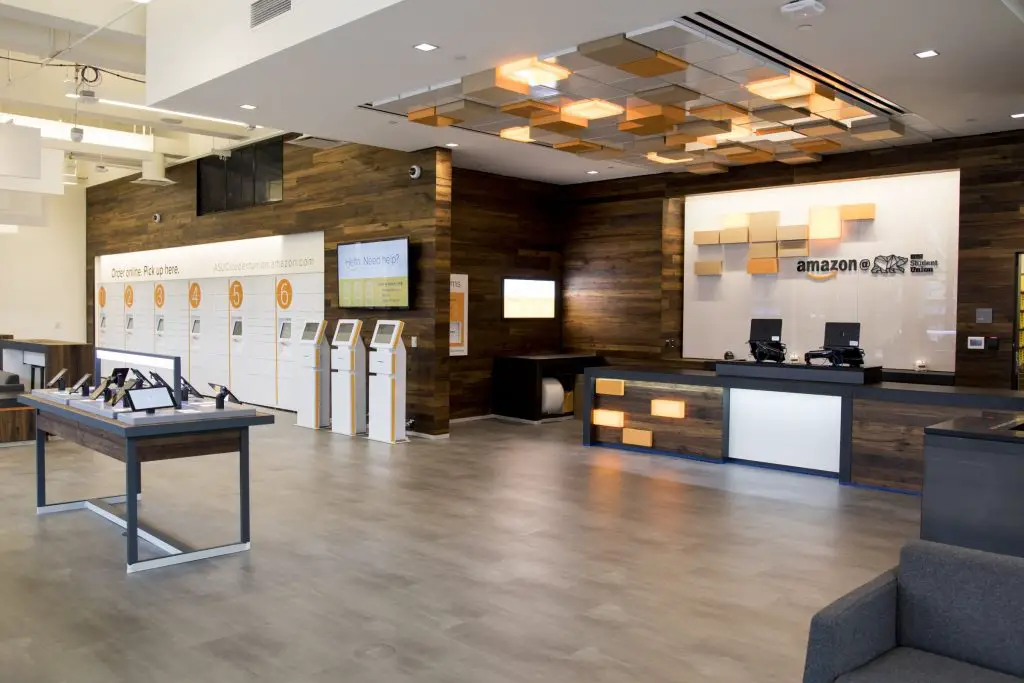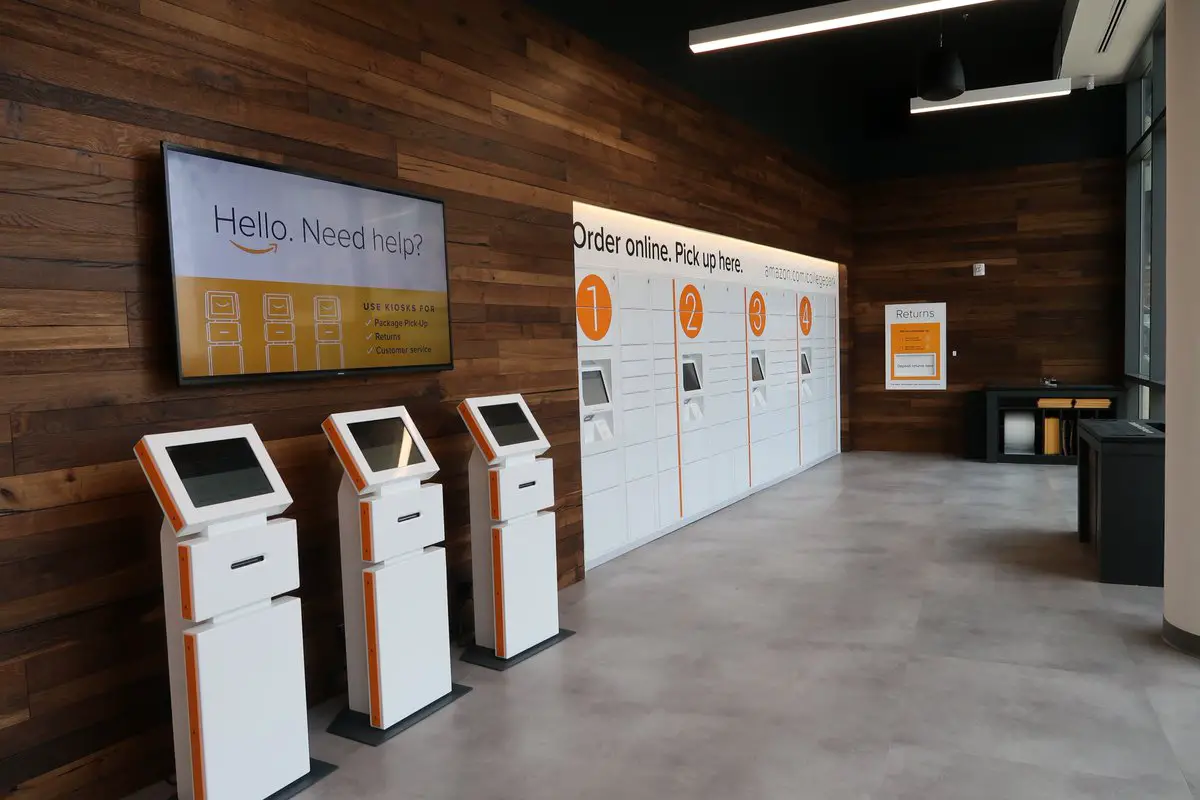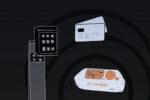As online shopping has boomed over the past few years, online marketplace giants like Amazon are continuously pushing the envelope, cementing themselves as essential for multiple markets. So, what’s one of the audiences that Amazon is catering to in particular? College students, of course.
Amazon Campus, which first appeared in 2015, has been making appearances at numerous universities across the United States this semester. Especially in the past few months, Amazon has been rolling out these new, physical locations for students to pick up online orders for products.
When students who have Amazon Prime order products by noon, they’re able to pick up their items the same day, using Amazon’s campus pickup location. The brick-and-mortar sites also include lockers where students can pick up their products. The aptly located pickup centers on campus also have convenience items for students to buy on a whim—from snack foods to essentials such as hygiene and feminine products.
These nifty locations can be used as a delivery site for any student who orders through Amazon, but the rapid, same-day delivery perk is exclusively for Prime members. Conveniently enough, however, Amazon offers a membership called Prime Students.
This service, which costs $50 (half the price of a regular Prime membership) allows college students to take full advantage of two-day shipping and obtain access to Amazon’s video and music streaming services. Overall, it’s a pretty sweet deal for technologically inclined shoppers.

Amazon’s direct marketing toward college students is a smart move, as society shifts towards a more digital environment. College students are part of the millennial generation, a demographic that is shaping the way companies market their products, and it shows.
With just over two-thirds of millennials preferring to shop online rather than in person, Amazon’s visible presence on campuses addresses the wants of college students, making it easy for them to spend their dollars with the e-commerce giant. Simply enough, Amazon Campus combines the convenience of shopping in one’s pajamas and the immediacy that college students, who have become more impatient than ever, crave.
This move should cause collegiate competitors to worry. For one, the locations of the Amazon pickup sites can be found near campus bookstores, such as Barnes and Noble. In the past, on-campus bookstores were the only option for most students to get their books on the same day. With Amazon Campus, students can get their textbooks (usually) more affordably and on the same day, too.
Aside from the convenience that comes with online shopping, why exactly does it thrive? With 51 percent of Americans preferring to shop online, it’s a serious question to ask. Well, Amazon’s interface and abundance of user-submitted reviews of their products allows consumers to have a good idea of what they’re purchasing.
Over the past few years, Amazon (and sites like it) have been trailblazers, and physical retailers have had to get with the times or else. In fact, 45 percent of all online sales are done via online marketplaces, with Amazon having 36 percent of those transactions. Without storefronts (not including Amazon Campus), online stores have been able to keep costs down, something that physical stores have struggled with.
In general, many shopping malls across the United States have been at risk, according to a 2016 Bloomberg report, especially malls reliant on department stores. Recently, we have seen the downfall of many different department stores, with shops such as J.C. Penney and Macy’s closing down dozens of storefronts nationwide. More specific shops, such as Payless and HHGregg, have gone into liquidation and have closed many of their doors as well, as consumers are looking to purchase tech and other gear online.
It also doesn’t help brick-and-mortar shops that Amazon is selling their own technology as well, providing even more product competition. With its voice-controlled speaker, Amazon Echo, users can perform many actions, from playing music to, yes, ordering more items off of Amazon. Furthermore, the online marketplace has had various Amazon Fire tablets on sale for a few years.
The e-commerce store has also fixed its eyes upon another facet of shopping: groceries. With Amazon’s highly discussed purchase of Whole Foods for $13.7 billion, it looks like the way that consumers purchase their food is adapting to digital environments — and will continue to do so. In late 2016, Amazon released their ideas for a revolutionary grocery store called Amazon Go, which revolved around a grocery store format and eliminated checkout lines. These adapting forms of basic shopping may give current grocery stores a run for their money.
Not all brick-and-mortar retailers are suffering, however. Retail giants like Walmart are adjusting to the times, partnering with online magnates to stay ahead of the curve. Starting in September, Walmart is partnering with Google to offer voice-shopping through Google Home.
Walmart also announced that consumers will not only be able to shop from home, but soon will be able to receive discounts for picking up online purchases in store or choose free two-day shipping. Changes like these suggest that Walmart and similar big-box stores are seeking to emulate the successes of online stores, in the hopes of increasing their own.
Although online shopping has only become popular in the past decade, it looks like it’ll be here to stay. Online marketplaces and retailers continue to develop new ways to attract consumers, and these changes are causing e-commerce to become more prevalent in our day-to-day lives.
By observing the wants and needs of millennials and college students, companies are seeking out new ways to obtain regular customers, and it’s working. Whether it may be establishing same-day textbook pickup locations on college campuses or providing shoppers with easier ways to place orders, online marketplaces are setting new standards for the way we shop.

















